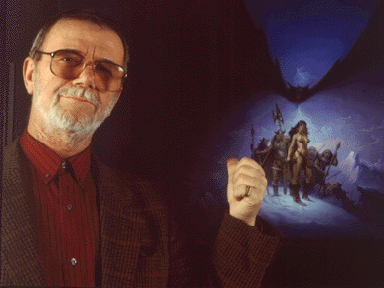|
|
Olivero Berni from 1965 to 1995
Here is a rare booklet concerning an unusual
painting. Yes because at first glance, though the impact usually pleasant
and reassuring with the eye and mind of the spectator, these images appear
to be really everything but ordinary or habitual. Their realism infact,
though in the precise way and optically realistic that Berni has to make
figurative without the expressionist deformations and narrative disguises
which contemporary art has accostumed us to, is only apparent, only of
skin, of surface. Under the contemplative tranquillity, in some cases only
rippled by litterary motivations there is always in fact, as a kind of
intense feeling, a sentiment of intricate and intriguing complexity. Besides,
the uncommon nature of this collection consists also in having gathered
among them, and with equal value, demonstrations of two different aspects
of his work in these last thirty years: that is from one side the one more
traditionally pictorial, concernings the "ways" of the portrait, of the
"dead nature" (still life), or of the landscape, and on the other, that
of illustration dedicated to the covers of a large consumption publishing.
Mixture of categories (let's remember only to the transition) to which
our to-day's culture so orientated to the utmost specialization is not
certainly used to, or immediately available. Therefore, an unusual sequence
of different images, that just for the circumstances of their "normality"
drive us somehow out of position, in a word, make us disconcerted, bewildered.
And that, furthermore, can contribute to remind the fact that in contemporary
art to-day, a little defiladed in comparison with the usual clamours exists
a sort of world apart. It is all that sector of attentions, of sensibility
and of expressive researches which has not given up, if we want to say
so, though responding to the necessities of precise commercial clients
to more traditional and technical reasons of the artistic image. A rather
uncommon world in which everything is equal and still deeply different
than that we see around. A world where painting is rigorous and intense
style, exercise of thought and heart, a result of extraordinary concentration
of every emotional and rational resource, tending exactly to respond to
the client's necessities without renouncing the reasons of one's own "work".
How long has Berni thought of an occasion to exhibit simultaneously the
two versants of his creativity, the one just commissioned or the one "free"
instead? I don't know precisley, and I'm not going to check, as what is
important it is just his showing together, with the same dignity, the two
genders, the two ways. And I think that his problem is, and has principally
been this one: that is to understand the substantial equality, for him,
of the two sectors (making himself understood by everybody). But is there
really equivalence of values between fine art and illustration? It won't
certainly be me to solve (or solve him) the problem in a definitive way.
Also because how much pure creativity is prevalent if compared to technical
of an applied art, basically, I don't think it is so vital.. However, I
have attentively followed and observed his work for many years and I must
say that if there isn't the theorical and universal certainty of such an
equivalence, there is anyway, a subjective reality represented just by
his work, whereas appears evident also to the observer less introduced,
how much the very surveyed and capable technical calibration acquired in
the illustration work, has throughout the years interwined with the painter's
art in such a way that, mutually, lirism and fantastication of the pictures
have induced larger and original breath to the execution of his covers.
With results, in one sector and in the other, always of great suggestiveness
and often really extraordinary. At the point that now, basically, it may
seem a bit forced or artificial to separate a discourse on him between
paintings and illustration. It is not only of look or of physical contemplation
nor of technical skill or manual knowledges, on the other hand, that is
imagination on the objects consistence or on the shading depths of the
naturalistic space for the works in the atelier; his stubborn intervention
on the arbitrariness margin generally accorded from the art director for
the covers. It is sufficient to look at these ones and at those ones to
become aware. There is in them a mature and intimate convinction of the
gesture blending in a plastic and incisive way on the twining between the
optycal impression and a solid distribution of the volumes between the
nervous touch but always softly controlled of the brush work and a precise
definition of the composition. But also there is always as a very light
restless shadow, the sign of a torsion, of a wrinkling hint. And it is
evident at once an inside quality, I should say sentimental of the composing.
Something that is given by a sort of vibrality of lievitation of pictorial
material intervening in the colour pith to make them crepitating and live,
mixing them to the emotion itself which Berni discovers in the image he
is going to represent. And such a quality exactly sees accorded in a happy
intuition the sentiment and the technique also when prevail in the opera,
be it picture or illustration, those motivation of "genders" that seem
to be the constant edge of reference of his figural language.
Giorgio Seveso
|
|


